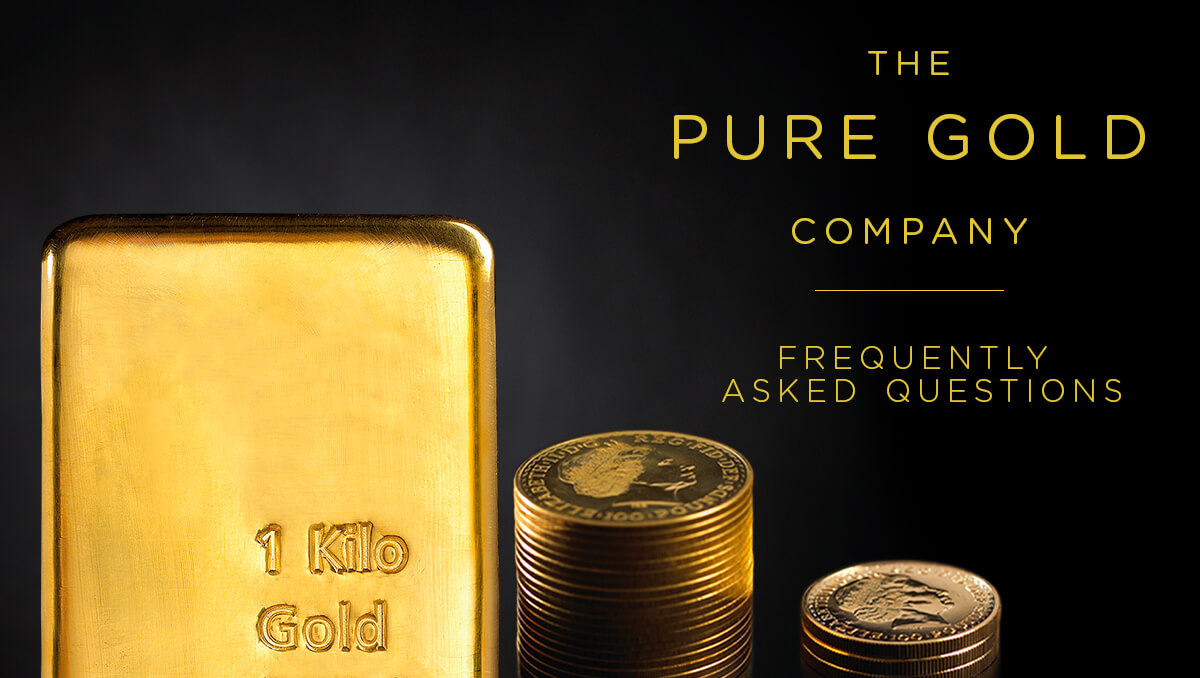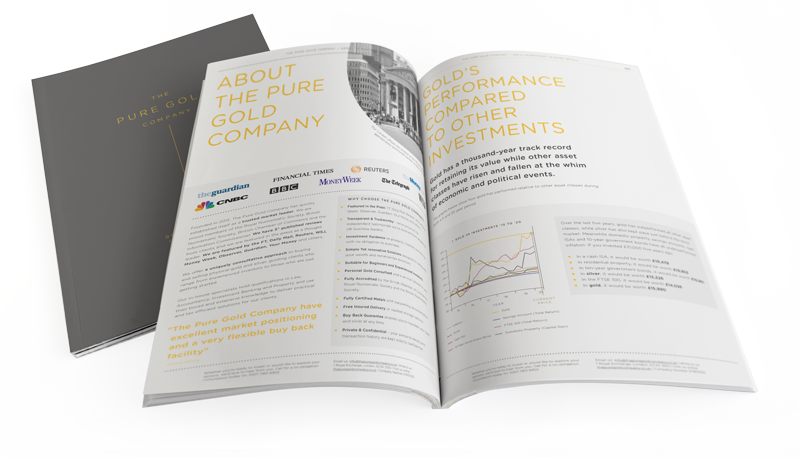At The Pietra Sussan Company, we specialise in helping our clients understand and navigate the gold investment world. In this blog post, we are focusing on some of the commonly asked questions to which our clients look to us for answers.
If you are researching investing in gold we hope these more detailed answers will help you. This is the first in a series of blog posts we are publishing to help investors better understand the world of physical gold investments. In this instalment we explore:
What factors affect the value of gold?/What moves gold prices?
Why does the price of gold fluctuate?
What is the best time to buy gold?
What factors affect the value of gold? / What moves gold prices?
Like all commodities, gold’s value fluctuates both up and down in response to market conditions, which affect demand for and supply of the precious metal. Demand for gold comes from four key sectors – jewellery, private investment, central bank reserves, and industry. Each sector is affected differently by changes in market conditions.
Rises in the price of gold occur when demand outstrips supply. Consumer and industrial demand and market instability are the primary motives for increased demand for gold. Jewellery makes up about half of the world’s mined gold.
Rapid population growth in the two largest markets for gold – India and China – has fuelled increasing demand. Industry requires less gold by tonnage, but the exponential growth of hi-tech electronics places growing demand on supplies.
Market instability drives purchases by private investors and, most importantly, massive purchases by central banks. Gold is a traditional safe-haven investment when markets are uncertain or falling, attracting heavy investment from financial institutions and individuals alike.
It was chiefly central bank demand during the 2008 global financial crisis and ensuing great recession that drove gold to an inflation-adjusted peak of 385% above the 2005 price. Investor demand during the upheaval of the coronavirus outbreak pushed the price of gold to an all-time high in August 2020 at a time when the stock market was down over 20% on the year.
Falls in the price of gold occur when supply outstrips demand. Increased investor and central bank confidence in market stability is the chief motivator for divesting gold. When investors are confident that global markets will continue to rise, they accept greater exposure to riskier investments that may appreciate more rapidly and potentially pay out dividends. If the price of gold drops below the level at which it is economical to extract it, mines may close (restricting supply) until the price returns.
The final factor that affects the price of gold is the value of the currency you use to buy it. Like all currencies, over time the value of the British pound sterling is eroded by inflation. Over the last two decades as goods have become more expensive incrementally year on year, £10,000 of goods in 2000 would cost over £16,000 today.
The relative value of the currency against the US dollar, the de facto global reference and reserve currency, also affects the price of gold in that currency. Over the same twenty-year period, the purchasing power of the pound has fallen 21% against foreign currencies. Both have effectively increased the price of gold in pounds sterling.
As with any investment, past performance is not a sure indicator of future results. Demand for gold can vary for many reasons. It is for investors to weigh the likely relative impact of these factors at present and in the future.
Why does the price of gold fluctuate?
Like all commodities, gold’s value fluctuates both up and down in response to market conditions, which affect demand for and supply of the precious metal. There are smaller daily variations in price caused by daily trading of physical gold and exchange-traded funds (a way to track the market price for gold without holding the physical asset).
Gold price fluctuations tend to trade in a narrow range, although major intra-day spikes either up or down can be prompted by specific seismic events (like the surprise Brexit vote or the start of the UK lockdown). Often these spikes are part of wider currency fluctuations or inflationary pressure.
Over the medium term, gold fluctuations reflect demand in the four key sectors of jewellery, private investment, central bank reserves, and industry. Global geopolitics along with internal political and economic factors prompt governments and investors to buy or sell gold, affecting medium-term demand. Gold jewellery is heavily influenced by the main markets of India and China, where population growth has fuelled longer-term demand. Industrial uses for gold make up a smaller proportion of total gold demand but can still move the price needle when combined with other factors.
Over the long term, the gold price has risen, maintaining value even when inflation has eroded the value of currencies. In fact, gold is counted as currency in many countries, although the actual value is in its resale, as if you tried to use a gold sovereign to pay for your groceries it would only be worth £1. In the last 50 years, gold has risen from around $40 to almost $1800, hitting a high earlier this year of $2067.
Falls in the price of gold occur when supply outstrips demand. Increased investor and central bank confidence in market stability is the chief motivator for divesting gold. This process typically happens more slowly than rapid rises characteristic of the panic buying which happens when investors seek to limit their exposure. Confidence usually returns more slowly than it departs.
As with any investment, past performance is not a sure indicator of future results. The price of gold can fluctuate for any combination of a myriad of reasons. It is for investors to weigh the likely relative impact of these factors at present and in the future.
What is the best time to buy gold?
Like all commodities, gold’s value fluctuates up and down in response to market conditions. The ideal time to buy would be when prices are low, then sell when they are high, but it is very difficult to predict all market moves. Investors tend to seek a safe-haven to ride out global financial and political instability, and this has impelled the price of gold up significantly since the turn of the millennium.
However, new investors should remember that current prices are relative to the recent past and future, not the distant past. Delaying or forgoing investment when prices are rising (or seem high in comparison to decades-old figures), in the hope that they will fall, leaves investors exposed to the market conditions that are driving the price higher.
Have you got other questions you would like answered? Please get in touch, we are always on hand and happy to help.


